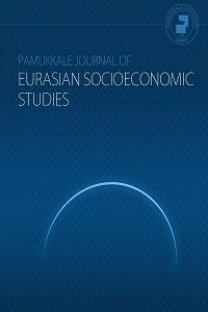İşsizlik dalgalanmalarının farklı bir perspektiften yeniden değerlendirmesi
İşsizlik Dalgalanmalarının kaynağı uzun süredir pek çok çalışmanın araştırma amacı olmuştur. Bu çalışmaların temel araştırma sorusu işsizliğe girişlerin mi yoksa işsizlikten çıkışların mı işsizlik oranlarını belirlediğidir. Bu araştırma son dönemde büyük ilgi çekmektedir çünkü Shimer (2012) işsizlikten çıkışların işsizliğe girişlerden daha fazla dalgalandığını ve işsizlik oranını belirlediğini göstermiştir. Bu çalışma Shimer’ın modelinde yanlılığa sebep olabilecek bir kusur olup olmadığını sorgulamaktadır. Bu sebeple bu çalışmada Shimer’ın kullandığı matematiksel ve istatistiksel model mekaniklerine derin bir inceleme getirilmektedir. Shimer çalışmasında iş gücü piyasasındaki durumlar arasındaki geçişleri incelerken geçiş oranlarını ele almıştır. Örnek olarak, işsiz kalan kişilerin oranı bu kişilerin sayısını toplam istihdam edilen kişi sayısına bölerek hesaplanmışken, iş bulan kişilerin oranı ise bu kişileri toplam işsiz sayısına bölerek hesaplanmaktadır. Bu durumda payda işsizliğe girenler için yüksek işsizlikten çıkanlar için düşük olacaktır. Bu durumda da iş bulan kişilerin dalgalanması daha yüksek olacaktır. Yani bu gözlemler göstermektedir ki Shimer’ın modeli işsizlikten çıkan kişilerin dalgalanmasını olması gerekenden daha yüksek göstermektedir. Bu çalışmada işsizliğe girişler ve çıkışların işsizlik ile olan döngüsel ilişkisini direk olarak oranlar üzerinden değil sayılar üzerinden incelenmektedir. Sayılara odaklanıldığında sonuçlar, Shimer’ın aksine, göstermektedir ki işsizlik havuzuna girişlerin işsizlik havuzundan çıkışlarda daha fazla dalgalanmaktadır ve işsizlik havuzuna girişlerin işsiz sayısındaki değişimleri daha büyük ölçüde açıklamaktadır.
Reassessing the Unemployment Fluctuations from a Different Perspective
The sources of unemployment fluctuations have been research objectives of many studies for a long time. The main research question of these studies is whether the fluctuations into or out of unemployment derives the unemployment rate. This line of research has attracted a great attention recently, because, as Shimer (2012) has confirmed that the flows out of unemployment fluctuate more than the flows into unemployment and derive the unemployment rate. This study asks if there is any flaw in Shimer’s formulation that might possibly lead to a bias in his results and, accordingly, this study tooks a closer look into the mechanics of the statistical model he constructs. This study observe that Shimer focuses on transition “rates,” which suggests that the denominator is smaller for the entry behavior than it is for the exit behavior, as the pool of unemployed is typically much smaller than the pool of employed. On the other hand this study focuses on transition number rather than rates. The result of this study is that employment to unemployment transitions are countercyclical and explains the most of the fluctuations in the number of unemployed contradicting with the results of Shimer (2012). On the other hand, the transitions out of unemployment shows a cyclical pattern.
